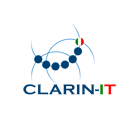The Project
ALDiNa was created in 2021 within the Italian Association for Digital Humanities and Digital Culture (AIUCD), with the collaboration of CLARIN-IT, the Italian Common Infrastructure for Language Resources and Technologies.
We are a group of scholars from various disciplines working together on the topic of born-digital literary archives. We are united by the belief that collaboration is essential to develop and share methodologies and best practices for acquisition, management, and preservation, ensuring access and the study of these materials, in dialogue with both national and international experiences.
Many archival institutions today hold born-digital literary materials: stored on various media and in different—often proprietary and undocumented—formats, they represent a heritage at risk of being poorly preserved or understood.
The lack of archival and philological awareness, combined with the obsolescence of hardware and software, increases the risk of memory loss. Paradigmatic cases include the reformatting of authors’ personal computers and the loss of important materials due to, for example, the demagnetization of floppy disks.
The first goal of the group is to conduct a census of born-digital materials preserved by research centers, foundations, universities, libraries, archives, and museums, and eventually also publishers, journals, and other institutions that hold this kind of content.
We believe that surveying the field is essential to spark a debate on this now-urgent and non-postponable issue. We have created a questionnaire to involve a wide range of memory institutions. This effort will be supplemented by consultations and on-site inspections.
In Brief
-
01 Born-Digital and Cultural Heritage
In 2014, the Council of the European Union included born-digital materials as part of Cultural Heritage. The document defines cultural heritage as: "resources inherited from the past in all forms and aspects—tangible, intangible and digital (produced originally in digital form and digitised)—including monuments, sites, landscapes, skills, practices, knowledge and expressions of human creativity, as well as collections preserved and managed by public and private entities such as museums, libraries and archives."
-
02 National Digitization Plan
In Italy, the National Digitization Plan 2022-2023 by the Ministry of Culture acknowledged these principles, stating that born-digital heritage "goes beyond being a mere replica of a physical original, becoming instead an autonomous, meaningful object that originates from a specific intellectual process."
-
03 A Definition of Born-Digital Cultural Heritage
The same National Plan defines born-digital cultural documents as materials "created in digital form, not digitized copies." These may include websites, documents, photos, audio, videos, previous digital reproductions, social media snapshots, etc.
-
04 Born-Digital in Literary Archives
Since the early 2000s, institutions have started to reflect on born-digital literary archives. Matthew Kirschenbaum wrote in “The .txtual Condition”: future scholars will not study contemporary writers the same way as past ones, because the materials—drafts, notes, letters, diaries—are increasingly digital. Ballard, who never used a computer, left a fully analog archive; contrast this with Franzen, who heavily customizes his outdated Dell laptop. One day, archivists may have to handle his hard drives, USB sticks, and floppy disks.

